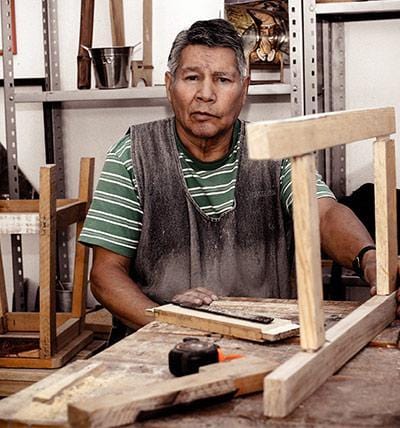While traditional renovations prioritize affordability, neglecting the environment through resource depletion and pollution, eco-friendly redesigns offer a solution.
Focusing on sustainable materials, less resource use, and minimal waste, they create healthy living spaces and minimize environmental impact. This benefits homeowners and future generations, promoting a shift towards renewable/recycled materials and improved indoor air quality.
The Principles of Eco-Friendly Home Renovations
Saving energy is a big part of eco-friendly home remodeling.
Not only does energy-efficient homeownership vastly decrease carbon footprints, but it also helps to make homes much more eco-friendly and affordable in the long term.
With old-fashioned home renovations comes a lot of waste, contributing to the rising problem of landfills and other environmental pollution. In eco-friendly house renovations, the focus will be on waste reduction as much as possible, achieved by using recycled and repurposed materials and employing practices that reduce the amount of debris created during construction. Homeowners should likewise check out recycling alternatives and guarantee that any non-reusable waste produced during the redesign is discarded mindfully.
The second key element of green renewal at home is selecting sustainable materials and products sourced locally. This decreases transportation emissions, supports local economies, and reduces the consumption of finite resources. Sustainably obtainable materials can include rapidly renewable resources such as bamboo and cork, recycled materials such as reclaimed wood and recycled plastic, and timber harvested sustainably from certified forestry practices.

Eco-friendly home renovations would only be eco-friendly with the elements of sustainable design, the most prominent of which is biophilic design. Creating spaces that increase well-being, reduce stress, and deepen our connection with nature is preferable for homeowners who can use indoor plants, natural lighting, and materials to do it. Transform your lifestyle, transform the Earth, and build the world better together.
Key Areas for Eco-Friendly Home Renovations
- Energy-Efficient Windows, Insulation, and Heating/Cooling Systems: Optimizing energy efficiency is crucial to eco-friendly home renovations. Replacing outdated windows with energy-efficient models can significantly reduce heat transfer, lowering energy consumption and carbon emissions. Proper insulation, including walls, attics, and crawl spaces, is another effective way to improve energy efficiency by minimizing heat loss or gain. Additionally, upgrading to energy-efficient heating and cooling systems, such as geothermal heat pumps or solar-powered systems, can significantly reduce a home's energy consumption and carbon footprint.
- Water Conservation Techniques: Due to increasing water scarcity, eco-friendly home renovations must prioritize water conservation. Installing low-flow fixtures, such as showerheads, faucets, and toilets, can significantly reduce water consumption without compromising functionality. Rainwater harvesting systems collect and store rainwater for irrigation, flushing toilets, or other non-potable applications, reducing the demand for municipal water supplies. Greywater systems, which recycle water from sinks, showers, and washing machines, can also be implemented to conserve water resources further.
- Sustainable Flooring Options: Flooring choices significantly affect eco-friendly home renovations. Sustainable options like bamboo and cork offer durability, beauty, and a lower environmental impact than traditional hardwood flooring. Bamboo, a rapidly renewable grass, is an excellent choice for its strength and versatility, while cork is a natural, renewable material that provides warmth and insulation. Recycled materials, such as reclaimed hardwood or recycled plastic tiles, can also be incorporated into flooring designs, reducing waste and giving new life to discarded materials.
- Eco-Friendly Paints, Finishes, and Adhesives: Traditional paints, finishes, and adhesives can contain harmful chemicals and volatile organic compounds (VOCs) that can negatively impact indoor air quality and contribute to environmental pollution. Eco-friendly alternatives offer homeowners safer and more sustainable options, such as low-VOC or zero-VOC paints and finishes, plant-based adhesives, and natural oils and waxes. These products reduce exposure to harmful chemicals and minimize the environmental impact during manufacturing and disposal.
- Renewable Energy Sources (Solar Panels, Wind Turbines): Integrating renewable energy sources into home renovations is a powerful way to reduce reliance on non-renewable energy and minimize carbon emissions. Solar panels can harness the sun's energy to generate electricity, while wind turbines can capture wind power for energy production. These renewable energy sources provide clean, sustainable energy and generate excess energy that can be sold back to the grid, offsetting energy costs and contributing to a more sustainable energy infrastructure.
- Eco-Friendly Fence Materials (Wood, Bamboo): Installing a fence around your property can provide valuable protection and security for your home. When it comes to fence installation, eco-friendly material choices can safeguard your home and align with your environmental values. Wood and bamboo are excellent sustainable options with minimal ecological impact. Wood is a natural and renewable resource that can be sustainably sourced, offering durability and aesthetic appeal for your fence. Bamboo, a fast-growing grass, is another eco-friendly choice that provides strength, beauty, and an environmentally conscious alternative.
Benefits of Eco-Friendly Home Renovations
Eco-friendly home renovations offer financial benefits in the long run. While the initial cost may be higher, energy-efficient appliances, insulation, and renewable energy sources will reduce utility bills. Water conservation measures like low-flow fixtures can also reduce water usage costs.

These renovations can also lead to a healthier living environment. Using non-toxic materials and improving ventilation reduces exposure to harmful chemicals and volatile organic compounds (VOCs) that can cause health problems. Choosing low-VOC paints and natural materials creates a healthier space for yourself and your family.
Finally, eco-friendly renovations benefit the environment. Using energy-efficient measures, renewable energy sources, and sustainable materials can reduce your home's carbon footprint and environmental impact.
This not only helps combat climate change but also preserves natural resources.
Getting Started with Eco-Friendly Home Renovations
Planning and Budgeting Considerations
Embarking on eco-friendly home renovations requires careful planning and budgeting. Homeowners should assess their renovation goals, prioritize areas for improvement, and research the associated costs of sustainable materials and technologies. While eco-friendly options may initially have a higher upfront cost, it is essential to consider the long-term savings and environmental benefits.
Homeowners should also explore financing options, such as green home improvement loans or energy-efficient mortgages, which can help offset the initial investment. Creating a detailed budget and timeline can help manage expectations and ensure a smooth renovation process.
Finding Qualified and Experienced Eco-Friendly Contractors
Choosing the right contractor is crucial for successful eco-friendly home renovations. Homeowners should seek contractors with experience and expertise in sustainable building practices and a commitment to environmental responsibility. These contractors can provide valuable guidance on material selection, energy-efficient systems, and innovative eco-friendly solutions.
Referrals from trusted sources, such as friends, family, or local environmental organizations, can be a valuable starting point. Additionally, homeowners can research certified green building professionals through organizations like the USGBC or CaGBC, ensuring they work with contractors who adhere to high sustainability standards.
Seeking Out Incentives, Tax Credits, and Rebates for Sustainable Renovations
Governments and utility companies often offer incentives, tax credits, and rebates to encourage homeowners to adopt eco-friendly practices. These financial incentives can help offset the costs associated with sustainable renovations, making them more accessible and financially viable.

Homeowners should research available incentives in their area, including tax credits for energy-efficient upgrades, rebates for installing renewable energy systems, or financial assistance for water conservation measures. Local government websites, utility company programs, and organizations like the Database of State Incentives for Renewables & Efficiency (DSIRE) can provide valuable information on available incentives and eligibility requirements.
Conclusion
Eco-friendly home renovations are a win-win. They not only create healthier and more comfortable homes through energy efficiency, water conservation, and sustainable materials but also reduce your environmental impact and contribute to a greener future for future generations. By embracing sustainable practices in your renovations, you can be an agent of change and inspire others to do the same.
ABOUT THE AUTHOR
Fred Felton
Content Creator / Editor
Fred Felton is a copywriter, editor and social media specialist based in Durban, South Africa. He has over 20 years of experience in creating high end content. He has worked with some of the biggest brands in the world. Currently Fred specialises in the wooden arts and crafts space, focussing on innovative wooden product design. He is also a keynote speaker and has presented talks and workshops in South Africa.






